Synne Kristine is a multimedia artist and digital designer based in Oslo, Norway. She is this week’s guest curator.
Artists have always looked to the sky for meaning. From Van Gogh’s Starry Night to Méliès’ A Trip to the Moon, and the star-swept pages of Le Petit Prince, the heavens have long been a canvas for memory, mystery, and metaphor.
In art, the sun often symbolizes vitality and revelation; the moon, emotion, illusion, and the unseen; the stars, longing, destiny, and the vast unknown.
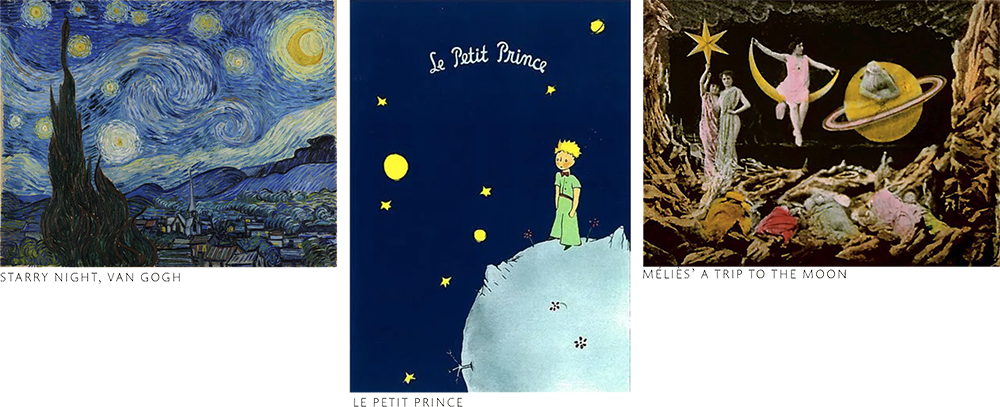
The sky in visual art often feels less like a setting and more like a mirror—one that reflects emotion. Van Gogh’s swirling night isn’t really about stars—it’s about restlessness and wonder. Olafur Eliasson’s Weather Project brought the sun indoors, transforming a museum into a glowing, mirrored space of reflection—both literal and psychological. Munch’s Sun blazes with something sacred. Matisse’s Icarus floats in endless blue, pierced by stars. Not just falling, but reaching—too far, perhaps.
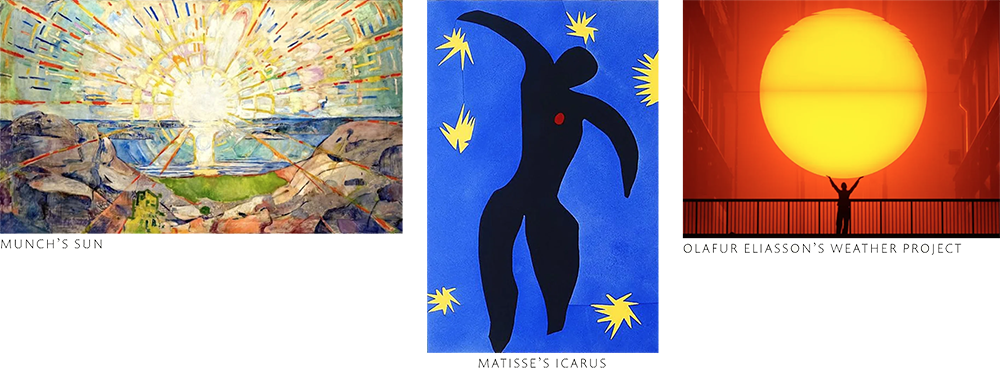
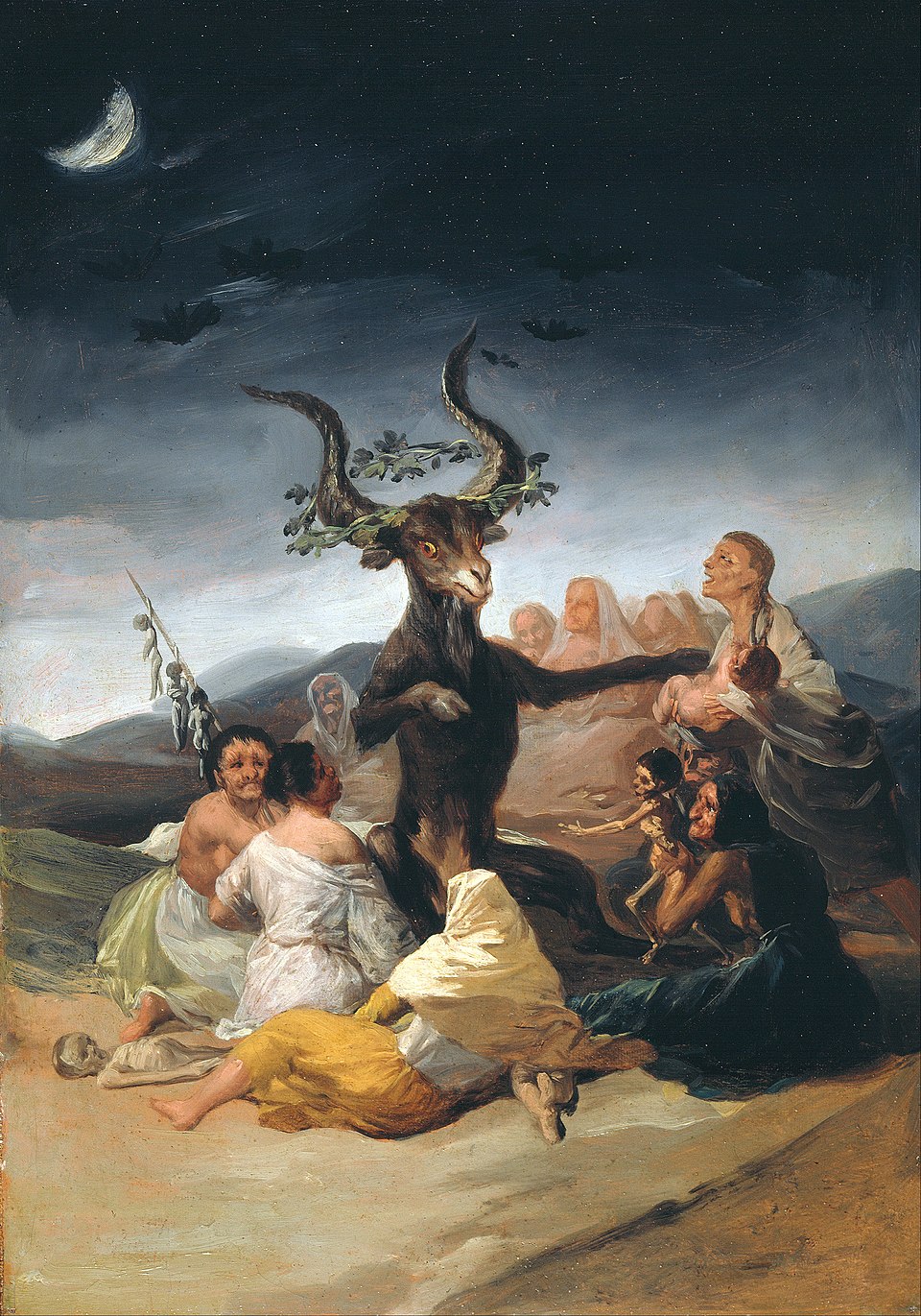
Goya Witches Sabbath
And the moon—on the other hand—feels colder, more distant. A symbol of tides and madness, of veiled truths and nocturnal spells. It is not a light, but an enchantment. A pale eye watching from the dark. A mirror not of who we are—but of what we fear, or desire most.
I’ve chosen six different artists who often depict the sky in their AI art—each using generative tools to express something timeless, emotional, and celestial in distinctly personal ways.
@aineuroangels conjures figures suspended between night and light. Aineuroangels´s celestial women are crowned in starlight, veiled in digital silk, and bathed in the hush of myth. It’s not realism—it’s ritual. Like Friedrich’s twilight or Goya’s ghosts, these images glow with sacred strangeness.
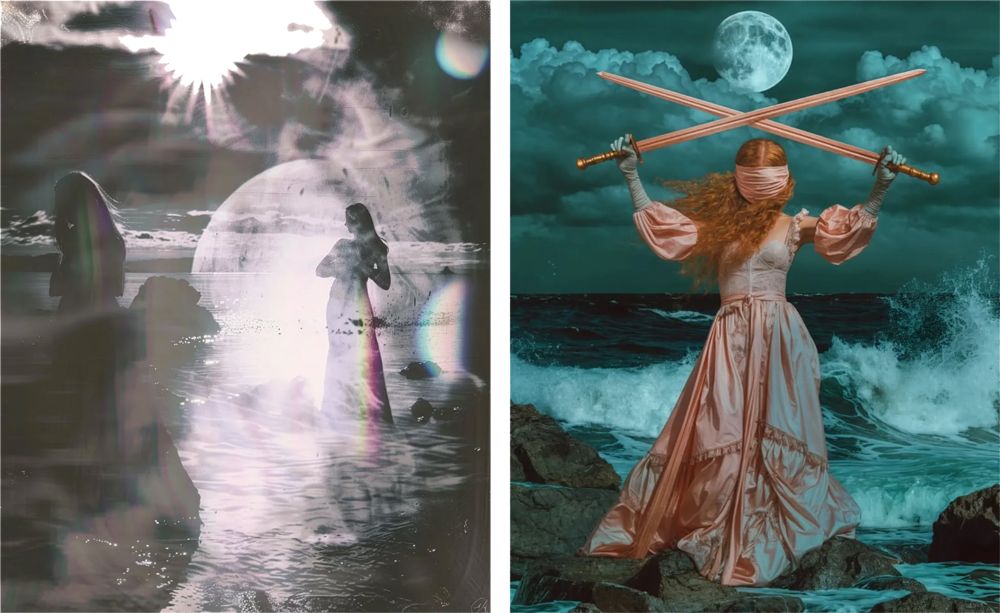
@digitaldollhouse_ai leans into intimacy. Her figures drift through forests and voids, cradling moons or cloaked in stars. Each frame feels quiet, theatrical, and surreal—somewhere between Icarus and a vintage editorial shoot. The sky here isn’t vast. It’s soft, symbolic, and close to the skin.
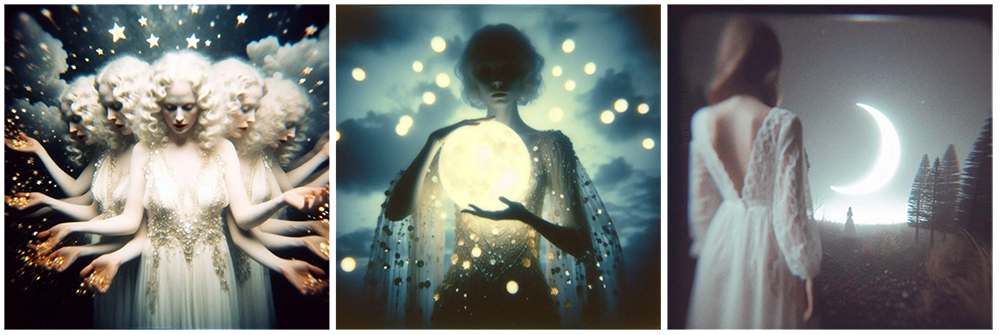
@heks.anda looks skyward through the lens of pagan ritual. Her masked figures and celestial symbols evoke a visual folklore where the sun and moon are not just motifs, but deities. With golden crescents, sunflower crowns, and thistle-choked ceremonies, her work channels the spirit of midsummer rites—somewhere between Goya’s Witches’ Sabbath and the eerie pageantry of The Wicker Man.
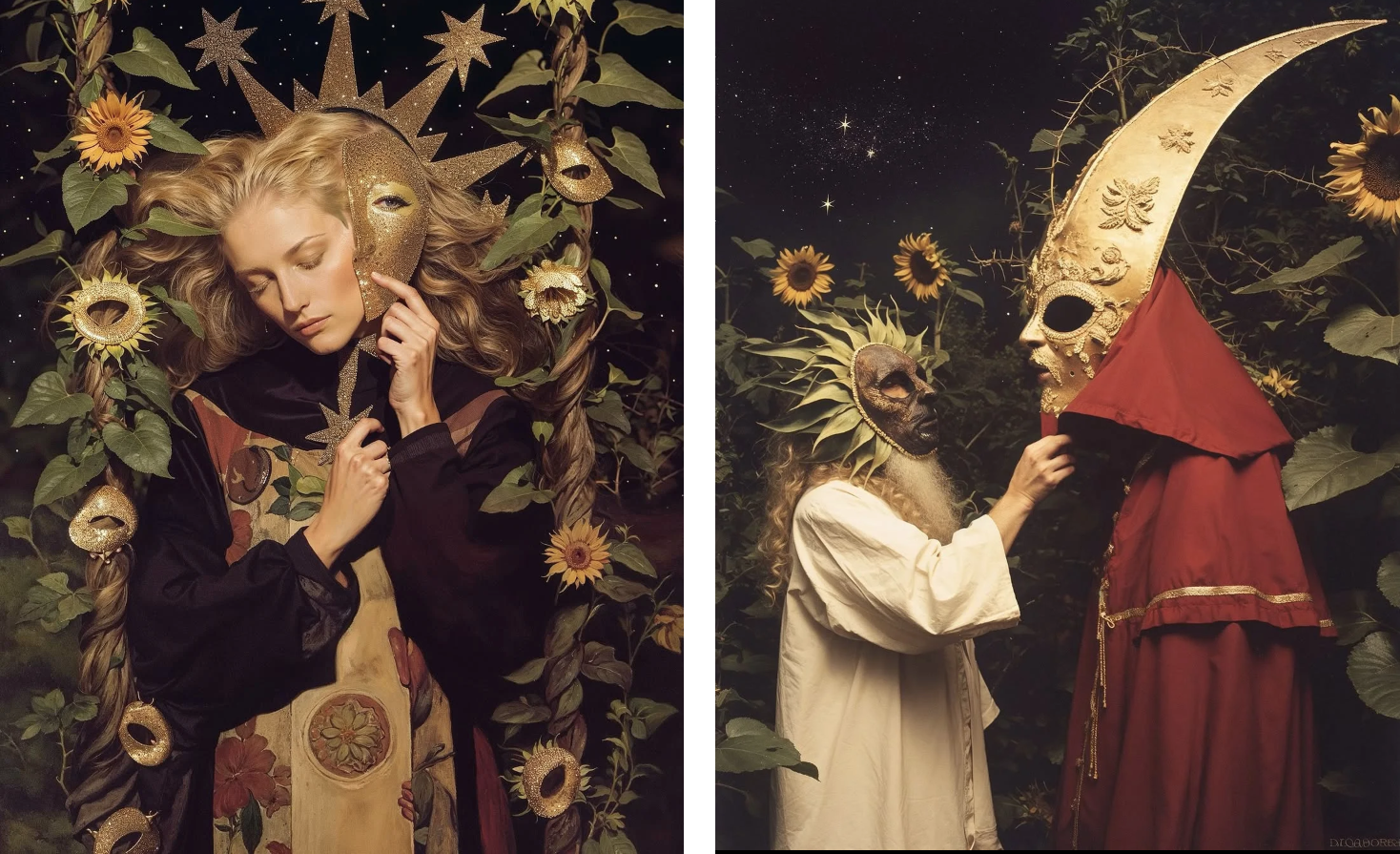
@pumpkinhenhouse makes the cosmos wearable. In her world, the moon is a mask, stars are sequins, and dresses glitter like constellations. The body becomes a celestial event. Her work blends fashion and fantasy, giving the sky shape through cloth, posture, and pose. It’s like couture for lunar goddesses.
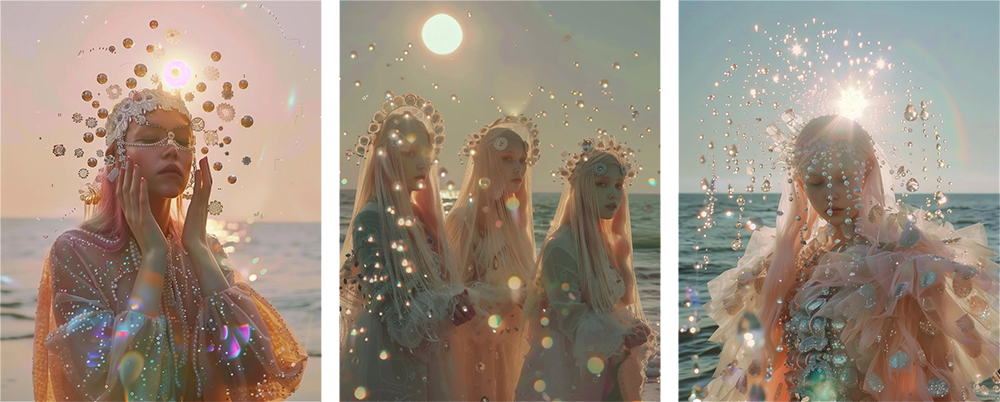
@tamsy.land filters the heavens through neuroaesthetic glow. Her figures radiate light and color, floating in fields of gradients and soft forms. Influenced by pattern and emotional response, her process—“ai-deating”—blends visual care with self-care. Her stars soothe. Her suns don’t burn—they shimmer.
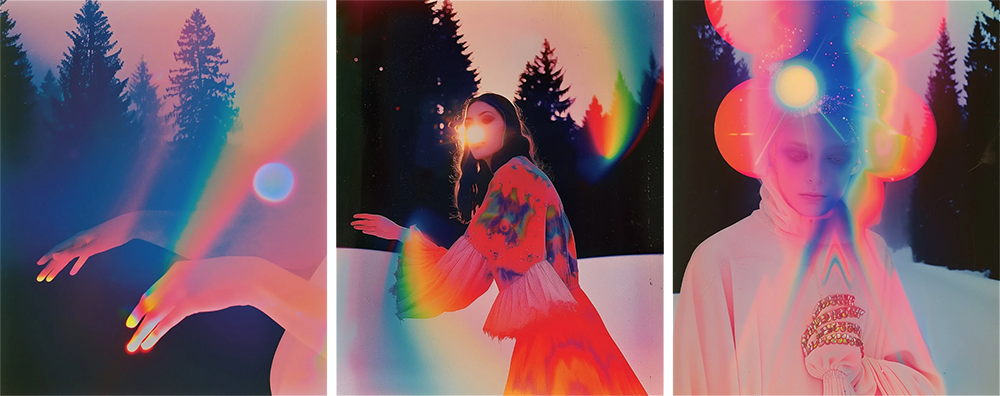
And then there’s @SlyCryptowitch. Her fascination lies in the moon—and in the moods of midnight cinema. Drawing from 1960s pop culture and retro witchcraft aesthetics, her work is pure spectacle: glamorous witches, crimson skies, and eerie moons that feel lifted from B-movie lore. Unlike the other artists’ quiet reverence or folk mysticism, hers is knowingly theatrical—where the cosmos becomes a stage for fantasy, fear, and feminine myth.
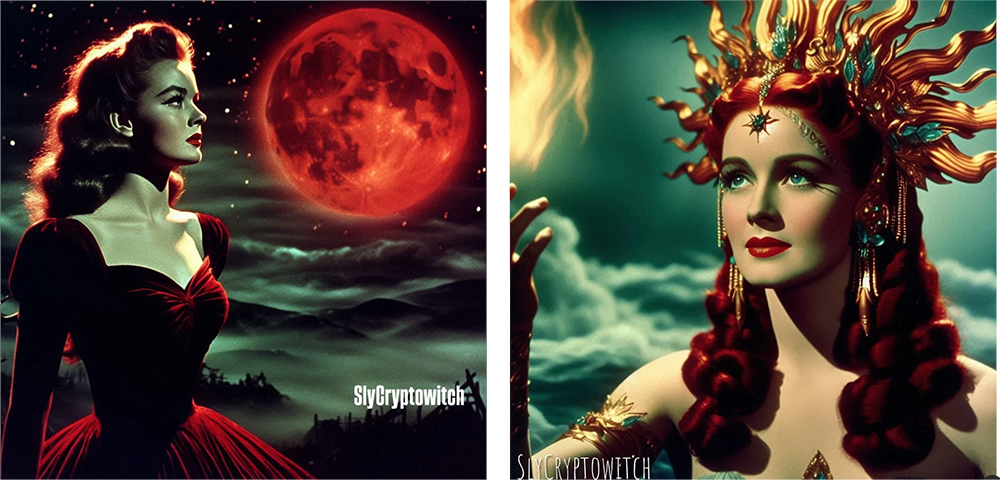
Together, these artists remind us that the sky isn’t just something we look at. It’s something we feel through. Whether veiled, ritualized, glamorized, or worn, the sun, moon, and stars still shape how we see—and express—what’s beyond words.